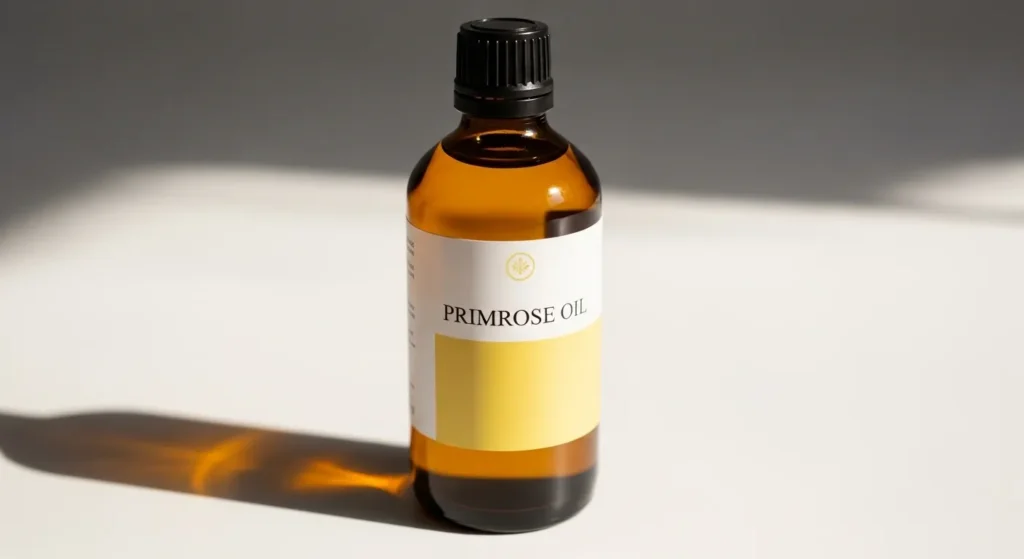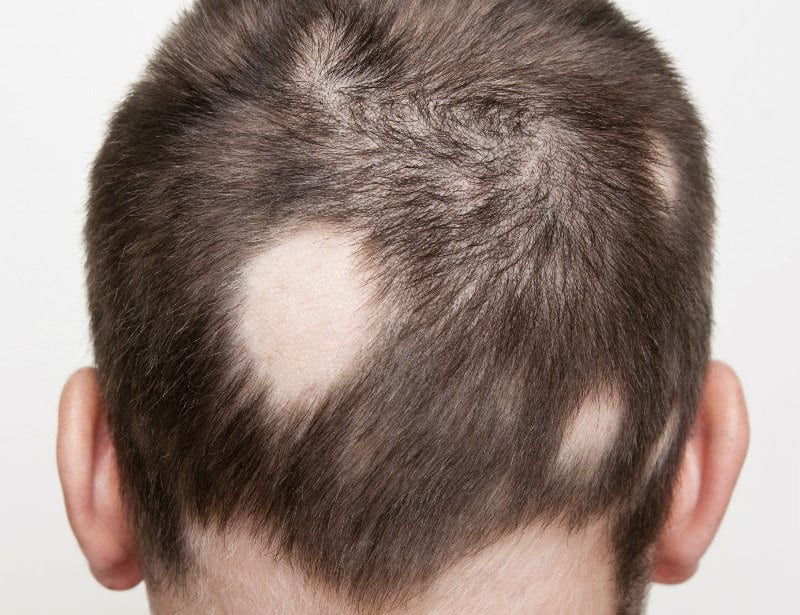Hair loss can be frustrating, especially when nothing seems to work. That’s why many people explore natural options like evening primrose and hair loss support. This plant-derived oil is rich in essential fatty acids and is believed to soothe inflammation, balance hormones, and promote scalp health.
In this article, you’ll learn how evening primrose oil works, what the research says, and how to use it safely to support your hair restoration journey.
What Is Evening Primrose Oil?

Overview of the Evening Primrose Plant
Evening primrose (Oenothera biennis) is a flowering plant native to North America. Its seeds are cold-pressed to produce evening primrose oil (EPO), a supplement widely used for its medicinal and cosmetic benefits.
Active Compounds: Gamma-Linolenic Acid (GLA) and Omega-6
EPO contains gamma-linolenic acid (GLA), a type of omega-6 fatty acid that plays a key role in anti-inflammatory processes. GLA is thought to help regulate hormonal imbalances and support skin and scalp health, both of which are critical for healthy hair.
Historical and Modern Medicinal Uses
Traditionally, evening primrose has been used to ease menstrual discomfort, eczema, and joint pain. Today, it’s also being explored as a natural remedy for hair loss, especially when related to hormonal or inflammatory conditions.
How Does Evening Primrose Oil Affect Hair Health?
Role of GLA in Scalp and Follicular Health
GLA helps nourish the scalp, reduce flakiness, and improve blood circulation—factors essential for hair follicle vitality. A healthy scalp creates the right environment for hair growth.
Anti-Inflammatory Effects for Conditions Like Alopecia Areata
Chronic inflammation is a known contributor to certain types of hair loss, like alopecia areata. GLA’s anti-inflammatory properties may help reduce follicle miniaturization and encourage regrowth.
Hormonal Regulation and Hair Cycle Support
Evening primrose is often used by women to support hormonal balance, particularly during PMS or menopause. Since hormonal imbalances can trigger hair shedding, especially in women, EPO may indirectly support a more stable hair growth cycle.
Scientific Evidence Behind Evening Primrose for Hair Loss
What Clinical Studies Say
While direct large-scale trials on evening primrose and hair loss are limited, smaller studies suggest that GLA may improve scalp condition, reduce hair shedding, and support hair texture. Research is ongoing, and more robust data is needed.
Limitations of Existing Research
- Most studies are small and not double-blind
- Results are anecdotal or based on broader skin/hormonal benefits
- Long-term effectiveness for androgenic alopecia is not well-documented
How It Compares to Other Hair Loss Supplements
Compared to biotin, zinc, or saw palmetto, evening primrose offers more specific benefits for hormonal and inflammatory hair loss rather than general nutrition-based solutions.
Who Can Benefit from Evening Primrose for Hair Loss?
Women with Hormonal Hair Loss (PCOS, Menopause)
EPO is particularly popular among women with PCOS-related hair loss, postpartum shedding, or menopausal thinning. Its hormone-modulating effects may stabilize hair shedding linked to estrogen imbalance.
Men Experiencing Androgenic Alopecia
Although less studied in men, EPO may help reduce inflammation associated with male pattern baldness and improve scalp hydration when used topically.

People with Inflammatory Scalp Conditions
If your hair loss is caused by seborrheic dermatitis, eczema, or psoriasis, EPO’s anti-inflammatory and moisturizing benefits could provide symptom relief.
How to Use Evening Primrose for Hair Loss
Topical vs Oral Supplements
- Topical: Massaged into the scalp for localized benefits
- Oral capsules: Offer systemic anti-inflammatory and hormonal support
Most people prefer combining both for better results.
Dosage Recommendations and Best Practices
- Typical oral dose: 500–1000 mg/day, divided into 2–3 doses
- Best taken with meals for improved absorption
Always follow product instructions and consult your physician.
How Long to Use Before Seeing Results
Results may take 8–12 weeks to become noticeable. As with most natural supplements, consistency and patience are key.
Combining with Other Treatments
Evening primrose oil can be used alongside minoxidil, PRP therapy, or microneedling, and may enhance results by improving scalp health.
Potential Side Effects and Precautions
Known Side Effects and Interactions
- Upset stomach
- Headache
- Mild skin irritation (topical use)
- May interact with blood thinners (like warfarin)
Who Should Avoid It
- Pregnant or breastfeeding women without medical supervision
- Individuals with bleeding disorders or taking anticoagulants
- Those with a history of epilepsy (rare risk of seizures reported)
When to Consult a Doctor
Always speak with a healthcare provider before starting evening primrose, especially if you’re using other medications or have a chronic condition.
Expert Opinion: What Do Dermatologists and Trichologists Say?
Is Evening Primrose Scientifically Justified?
While not yet standard clinical practice, many integrative dermatologists acknowledge its supportive role in holistic hair care.
Integrative Approach to Hair Loss Management
Combining EPO with lifestyle changes, hormone regulation, and proven treatments can yield better outcomes than relying on supplements alone.
Medical References and Guidelines
- Consider referencing:
- National Center for Complementary and Integrative Health (NCCIH)
- Journal of Dermatological Treatment
- Trichology-focused reviews
Frequently Asked Questions (FAQs)
Can Evening Primrose Reverse Balding?
No, but it may slow or stabilize hair loss, especially if inflammation or hormones are involved.
Is It Better Taken with Food?
Yes, EPO is fat-soluble and better absorbed with meals.
Can It Be Used with Minoxidil or Finasteride?
Yes. In fact, many users combine evening primrose oil with topical or oral medications for synergistic results.
How Long Should I Take It for Hair Loss?
At least 8–12 weeks, with some using it safely for up to 6 months.
Is Evening Primrose Worth Trying for Hair Loss?
Evening primrose oil offers promising benefits for those dealing with hormonal or inflammation-driven hair loss, especially women. While it’s not a cure, it may enhance your existing hair restoration regimen. As with any supplement, consult your doctor before starting, and pair it with evidence-based treatments for the best results.
